
Folklore is the body of expressive culture shared by a particular group of people, culture or subculture. This includes oral traditions such as tales, myths, legends, proverbs, poems, jokes, and other oral traditions. This also includes material culture, such as traditional building styles common to the group. Folklore also encompasses customary lore, taking actions for folk beliefs, and the forms and rituals of celebrations such as Christmas, weddings, folk dances, and initiation rites.

A joke is a display of humour in which words are used within a specific and well-defined narrative structure to make people laugh and is usually not meant to be interpreted literally. It usually takes the form of a story, often with dialogue, and ends in a punch line, whereby the humorous element of the story is revealed; this can be done using a pun or other type of word play, irony or sarcasm, logical incompatibility, hyperbole, or other means. Linguist Robert Hetzron offers the definition:
A joke is a short humorous piece of oral literature in which the funniness culminates in the final sentence, called the punchline… In fact, the main condition is that the tension should reach its highest level at the very end. No continuation relieving the tension should be added. As for its being "oral," it is true that jokes may appear printed, but when further transferred, there is no obligation to reproduce the text verbatim, as in the case of poetry.

Urban legends is a genre of folklore concerning stories about an unusual or humorous event that many people believe to be true but largely are not.

A vampire is a mythical creature that subsists by feeding on the vital essence of the living. In European folklore, vampires are undead humanoid creatures that often visited loved ones and caused mischief or deaths in the neighbourhoods which they inhabited while they were alive. They wore shrouds and were often described as bloated and of ruddy or dark countenance, markedly different from today's gaunt, pale vampire which dates from the early 19th century. Vampiric entities have been recorded in cultures around the world; the term vampire was popularized in Western Europe after reports of an 18th-century mass hysteria of a pre-existing folk belief in Southeastern and Eastern Europe that in some cases resulted in corpses being staked and people being accused of vampirism. Local variants in Southeastern Europe were also known by different names, such as shtriga in Albania, vrykolakas in Greece and strigoi in Romania, cognate to Italian 'Strega', meaning Witch.

A fairy tale is a short story that belongs to the folklore genre. Such stories typically feature magic, enchantments, and mythical or fanciful beings. In most cultures, there is no clear line separating myth from folk or fairy tale; all these together form the literature of preliterate societies. Fairy tales may be distinguished from other folk narratives such as legends and explicit moral tales, including beast fables. Prevalent elements include dragons, dwarfs, elves, fairies, giants, gnomes, goblins, griffins, merfolk, monsters, pixies, talking animals, trolls, unicorns, witches, wizards, magic, and enchantments.

A legend is a genre of folklore that consists of a narrative featuring human actions, believed or perceived to have taken place in human history. Narratives in this genre may demonstrate human values, and possess certain qualities that give the tale verisimilitude. Legend, for its active and passive participants, may include miracles. Legends may be transformed over time to keep them fresh and vital.

La Llorona is a vengeful ghost in Mexican folklore who is said to roam near bodies of water mourning her children whom she drowned in a jealous rage after discovering her husband was unfaithful to her. Whoever hears her crying either suffers misfortune or death and their life becomes unsuccessful in every field.
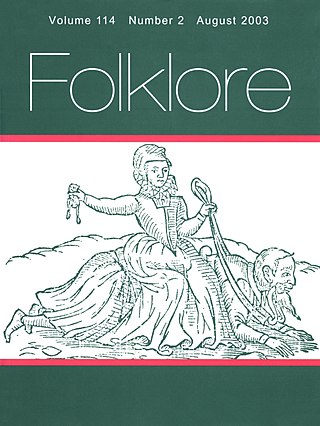
Folklore studies is the branch of anthropology devoted to the study of folklore. This term, along with its synonyms, gained currency in the 1950s to distinguish the academic study of traditional culture from the folklore artifacts themselves. It became established as a field across both Europe and North America, coordinating with Volkskunde (German), folkeminner (Norwegian), and folkminnen (Swedish), among others.

Apurímac is a department and region in southern-central Peru. It is bordered on the east by the Cusco Region, on the west by the Ayacucho Region, and on the south by the Arequipa and Ayacucho regions. The region's name originates from the Quechua language and means "where the gods speak" in reference to the many mountains of the region that seem to be talking to each other.
Néo-trad is a musical style from Quebec that arose around the turn of the 21st century. It can be considered a subgenre of Québécois folk music. The term combines the Greek prefix neo, meaning new, and the contraction of the word traditionnelle, as in traditional music.
The Aarne–Thompson–Uther Index is a catalogue of folktale types used in folklore studies. The ATU Index is the product of a series of revisions and expansions by an international group of scholars: originally composed in German by Finnish folklorist Antti Aarne (1910), the index was translated into English, revised, and expanded by American folklorist Stith Thompson, and later further revised and expanded by German folklorist Hans-Jörg Uther (2004). The ATU Index, along with Thompson's Motif-Index of Folk-Literature (1932)—with which it is used in tandem—is an essential tool for folklorists.
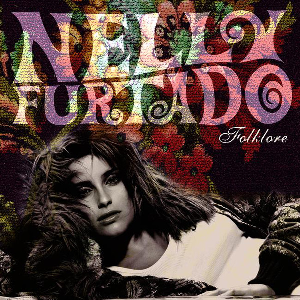
Folklore is the second studio album by Canadian singer-songwriter Nelly Furtado, released on 5 November 2003 through DreamWorks Records. While the album did not match the success of her previous album in such markets as the United States and Australia, it did however become a success in several European countries. Folklore spawned five singles: "Powerless ", "Try", "Força", "Explode" and "The Grass Is Green". As of 2008, the album had sold 2 million copies worldwide.
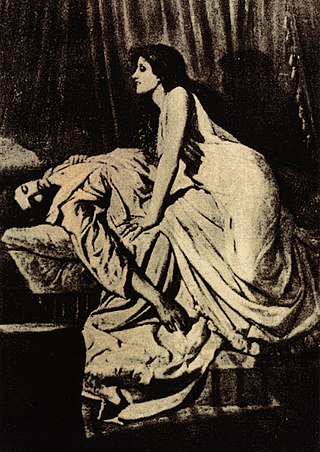
A vrykolakas, also called vorvolakas or vourdoulakas, is a harmful undead creature in Greek folklore. It shares similarities with numerous other legendary creatures, but is generally equated with the vampire of the folklore of the neighbouring Slavic countries. While the two are very similar, a vrykolakas eats flesh, particularly livers, rather than drinking blood, which combined with other factors such as its appearance bring it more in line with the modern concept of a zombie or ghoul.

Hans-Joachim Koellreutter was a Brazilian composer, teacher and musicologist.
Keigo Seki was a Japanese folklorist. He joined a group under Yanagita Kunio, but often came to different conclusions regarding the same folktales. Along with collecting and compiling folktales, Seki also arranged them into a series of categories.

San Bernardo is a city of Chile, part of the Greater Santiago conurbation. Administratively, it is a commune and the capital of the Maipo Province in the Santiago Metropolitan Region. It is the seat of the Roman Catholic Diocese of San Bernardo.
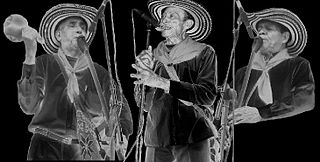
Los Gaiteros de San Jacinto are a Colombian traditional folkloric cumbia group formed in the Caribbean Region of Colombia which have been active since 1940. Their folkloric music preserves the traditional rhythms and sounds product of a mixture of the Colombian Indigenous, Spanish and Afro-Colombian heritage.
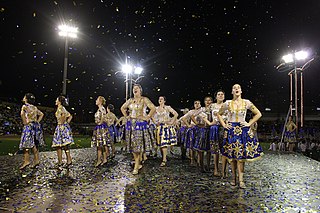
Tricana poveira is a traditional style of women's clothing from the Portuguese city of Póvoa de Varzim. This look, consisting of colorful costumes, was fashionable and mainstream from the 1920s to the 1960s. Women who dressed in the Tricana poveira style became known as tricana girls.
The Premios Gardel a la Música, or just Premios Gardel, is an award presented by the Argentine Chamber of Phonograms and Videograms Producers (CAPIF) to recognize the best of Argentine music and to award the talent of Argentine artists in a diversity of genres and categories. The trophy depicts a sculpture of French Argentine tango singer Carlos Gardel, one of Argentina's music icons. The annual presentation ceremony features performances by prominent artists, and the presentation of awards that have more popular interest.

Folklore is the eighth studio album by the American singer-songwriter Taylor Swift. It was a surprise album, released on July 24, 2020, via Republic Records. Following the outbreak of the COVID-19 pandemic in early 2020, Swift canceled the concert tour for her seventh studio album Lover (2019). She conceived Folklore during quarantine as "a collection of songs and stories that flowed like a stream of consciousness", working with producers Aaron Dessner and Jack Antonoff virtually; Dessner and Antonoff operated from recording studios in the Hudson Valley and New York City, respectively, while Swift recorded her vocals in a home studio at her Los Angeles residence.
















